The Application of Self Drilling Anchor Bolt at the Tala Hydro Project for Tunneling in Poor Rock Mass Conditions
Time:2024-07-30View:
The Tala Hydroelectric Power Station in Bhutan stands as a remarkable feat of engineering, harnessing the power of the Wangchu River to generate clean and sustainable energy. However, the construction of this project faced significant challenges due to the poor rock mass conditions in the area. Fortunately, the implementation of self-drilling anchor bolts revolutionized the construction process, offering a robust solution to overcome the demanding geological conditions.
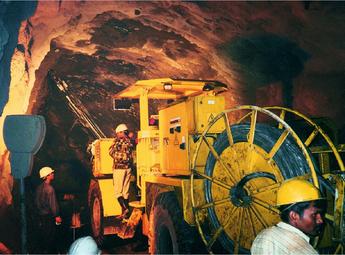
Project Background
Tala Hydroelectric Power Station is a run-of-the-river type hydroelectric power station on the Wangchu River in Chukha District, Bhutan. Managed by the Tala Hydroelectric Project Authority (THPA), it is the region's largest high-head project, situated at an elevation of 860 meters. The station consists of a 92-meter (302 ft) tall gravity dam which diverts water through a 22-kilometer (14 mi) long headrace tunnel to the power station.
Originally slated for completion in June 2005, the project faced significant geological hurdles, ultimately delaying its commissioning until March 2007. The rock formations, primarily Thimphu gneiss, exhibited challenging characteristics, including joint sets, fault lines, and varying thicknesses of foliation shears.
Geological Challenges at Tala
Rock Mass Conditions
The rock type within the project site is predominantly biotite gneiss with bands of quartzite, mica schist, and sericite schist with amphibolite. These geological formations presented a major challenge for the construction team. The rock conditions, rated 3 - 4 on the NGI Q system, were particularly poor in areas such as C2, C-3, and all of C-4, necessitating urgent stabilization measures.
Variability and Instability
During excavation, the powerhouse and penstocks revealed a wide variance from the anticipated rock classification. The fragmented strata, prone to instability, posed a significant threat to the progress and safety of the construction efforts. The presence of joint sets and fault lines further complicated the situation, making it difficult to maintain the integrity of the tunnels and chambers during construction.
The Need for an Innovative Solution
To overcome these geological challenges and ensure the structural integrity of the Tala Hydro Project, a pioneering solution was needed. Traditional methods of rock stabilization were insufficient due to the complexity and instability of the rock formations. This necessitated the adoption of a more advanced and reliable method to stabilize the rock mass and facilitate safe tunneling operations.
Introduction to Self-Drilling Anchor Bolts
What Are Self-Drilling Anchor Bolts?
Self-drilling anchor bolts are a type of rock bolt that combines the functions of drilling, anchoring, and grouting into a single operation. These bolts consist of a hollow steel rod with an integrated drill bit at the tip. The design allows for simultaneous drilling and grouting, which significantly enhances the efficiency and effectiveness of the anchoring process.
.jpg)
Advantages of Self-Drilling Anchor Bolts
The use of self-drilling anchor bolts offers several advantages over traditional rock bolts:
1. Simultaneous Drilling and Anchoring: This reduces installation time and mitigates the risk of hole collapse, a common issue in unstable rock formations.
2. Increased Efficiency: The integrated design allows for faster installation, reducing overall project timelines.
3. Improved Stability: The grouting process enhances the bonding between the bolt and the rock, providing superior stability and load-bearing capacity.
4. Versatility: These bolts can be used in a variety of geological conditions, making them suitable for complex and challenging projects like the Tala Hydro Project.
Implementation at Tala Hydro Project
Strategic Deployment
The application of self-drilling anchor bolts brought about a seismic shift in the construction approach at the Tala Hydro Project. These innovative rock bolts were employed strategically to stabilize the desilting chamber walls and facilitate tunneling in poor rock mass conditions.
Technical Specifications
The construction team utilized a combination of 114 anchors with 20-meter length and 38mm diameter, spaced at 3 meters, and an additional row of 36 anchors with 24-meter length and 51mm diameter, also spaced at 3 meters. This strategic deployment ensured that the anchor bolts penetrated deep into the competent rock, providing the necessary stability to the chamber walls.
Installation Process
The installation of self-drilling anchor bolts involved the following steps:
1. Drilling: The integrated drill bit at the tip of the bolt allowed for simultaneous drilling and grouting, ensuring that the bolt was securely anchored into the rock.
2. Grouting: Once the desired depth was reached, grout was injected through the hollow rod, filling any voids and fractures in the rock. This enhanced the bonding between the bolt and the rock, providing additional stability.
3. Anchoring: The bolt was then tensioned to the desired load, ensuring that it provided the necessary support to the surrounding rock mass.
Case Study: Desilting Chamber No.3
Challenges Faced
During the construction of Desilting Chamber No.3, extensive cracks were detected in the RCC wall through borehole camera investigations. The fragmented strata posed a significant challenge, making it difficult to maintain drilled holes long enough for the installation of longer rock bolts. This necessitated the adoption of a more advanced and reliable method to stabilize the chamber walls.
Application of Self-Drilling Anchor Bolts
The construction team employed self-drilling anchor bolts strategically to address the challenges faced in Desilting Chamber No.3. By securely anchoring the chamber walls to the deeper competent rock, these bolts provided the much-needed stability and ensured the safe continuation of the project.
Results and Impact
The use of self-drilling anchor bolts in Desilting Chamber No.3 yielded significant results:
1. Enhanced Stability: The bolts provided superior stability to the chamber walls, mitigating the risk of collapse and ensuring the safety of the construction team.
2. Reduced Installation Time: The simultaneous drilling and grouting process reduced the overall installation time, allowing the project to proceed without significant delays.
3. Improved Load-Bearing Capacity: The grouting process enhanced the bonding between the bolts and the rock, providing superior load-bearing capacity and stability.
Broader Applications in Tunneling
Advantages in Tunneling Projects
The successful application of self-drilling anchor bolts at the Tala Hydro Project underscores their potential in other tunneling projects, particularly those involving poor rock mass conditions. The advantages offered by these bolts make them an ideal choice for a variety of tunneling applications:
1. Versatility: Self-drilling anchor bolts can be used in a variety of geological conditions, making them suitable for complex and challenging tunneling projects.
2. Efficiency: The integrated design allows for faster installation, reducing overall project timelines and costs.
3. Stability: The grouting process enhances the bonding between the bolts and the rock, providing superior stability and load-bearing capacity.
Conclusion
The Tala Hydro Project serves as a remarkable testament to the power of innovation and adaptability in the face of challenging geological conditions. Through the application of Self Drilling Anchor Bolts, the construction team successfully overcame the obstacles posed by poor rock mass conditions, ensuring the stability of critical structures and facilitating tunneling operations. This case study highlights the importance of advanced construction technologies and showcases the pivotal role played by Self Drilling Anchor Bolts in the success of complex projects like the Tala Hydro Project.
latest cases
-
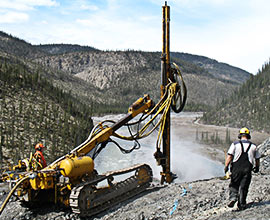
- The Application of Self Drilling Anchor Bolt at the Tala Hydro Project for Tunneling in Poor Rock Mass Conditions
- Time:2024-07-30From:This Site
- The Tala hydroelectric project is located in Chukha Dzongkhag in western Bhutan. The dam site is in the Thimphu gneiss, and the section of HRT up to 14km downstream from C-1 is in gneiss with quartzite bands and biotite schists. There are joint sets, and the rock is highly faulted, with foliation shears of varying thickness up to 30cm. From 14km to 23km, the rock type is biotite gneiss with bands of quartzite, mica schist, and sericite-schist with amphibolite. Rock conditions merit 3 - 4 on the NGI Q system, with pretty poor conditions affecting parts of C2, C-3 and all of C-4. The rock format
- View details
-
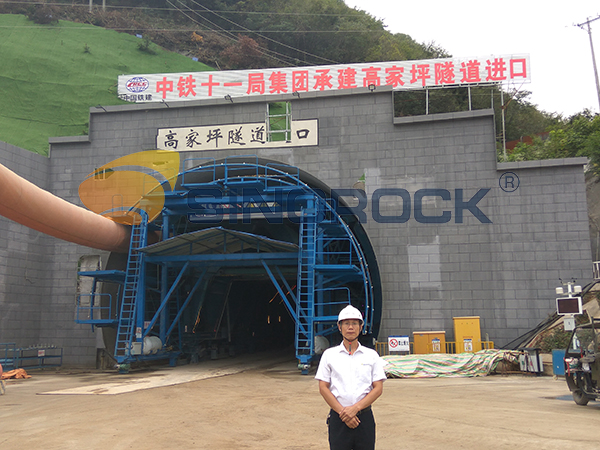
- Pre-support with Pipe Umbrella System for Gaojiaping Tunnel
- Time:2022-08-04From:This Site
- The success of the Gaojiaping Tunnel's construction demonstrates the ingenuity of Sinorock's self-drilling anchor system. It not only overcame the geological challenges but also enhanced safety and efficiency in tunnel construction. As China's infrastructure projects continue to push boundaries, Sinorock's commitment to professionalism and reliable products ensures a safer and more efficient future.
- View details
-
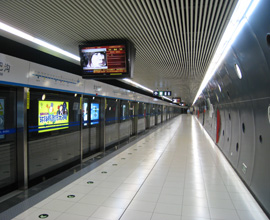
- The Construction Method of Self Drilling Anchor Bolt in Sandy Gravel Deep Excavation
- Time:2015-10-22From:This Site
- With the exploitation of the underground space in cities and the large scale construction of the underground retail spaces, the deep excavation projects is becoming more and more.
- View details
-
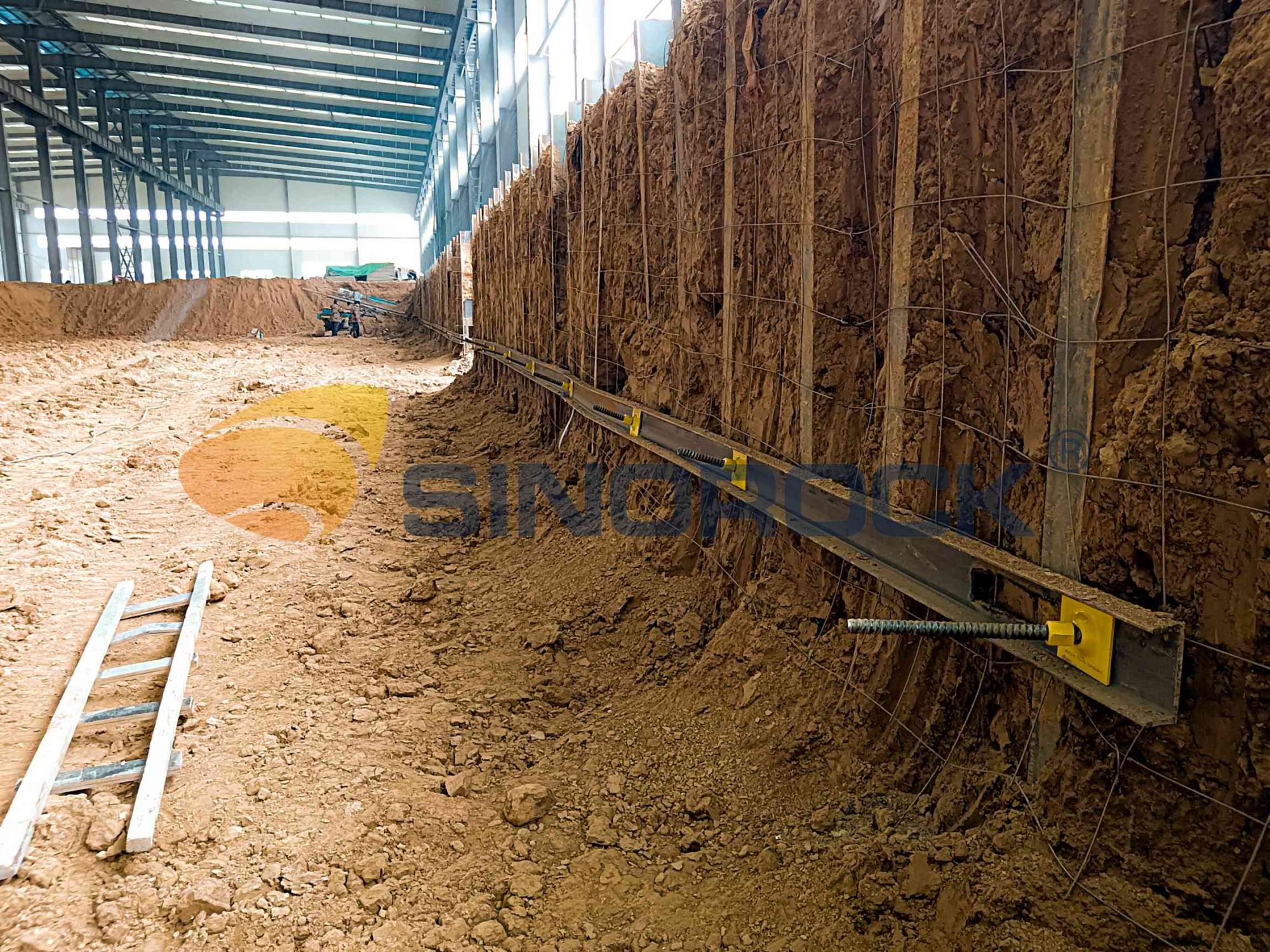
- Foundation Support for Hongji Group's High-end Packaging Materials Project
- Time:2023-10-20From:This Site
- Hongji Group's High-end Packaging Materials Project in Linqing City, Shandong Province, serves as a vivid example of how Sinorock's representative R32 self-drilling hollow helical anchor bolts played an instrumental role in supporting the foundation of a high-stakes industrial endeavor.
- View details
-
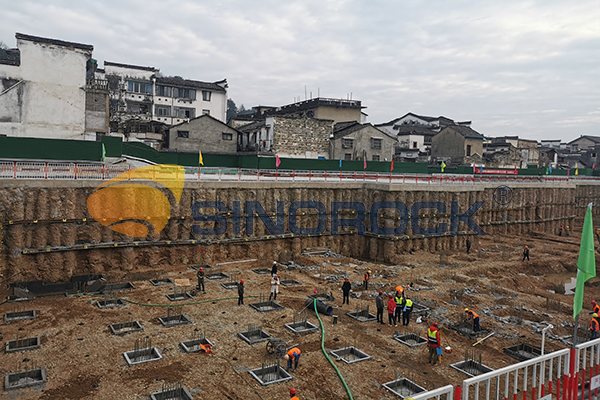
- Binjiang West Road Pedestrian Mall Project
- Time:2022-07-15From:This Site
- The project requires a shorter construction period and lower cost. After multiple rounds of plan review, the project party finally decided to adopt a self-drilling anchor system, using simultaneous drilling and grouting construction processes.
- View details
-
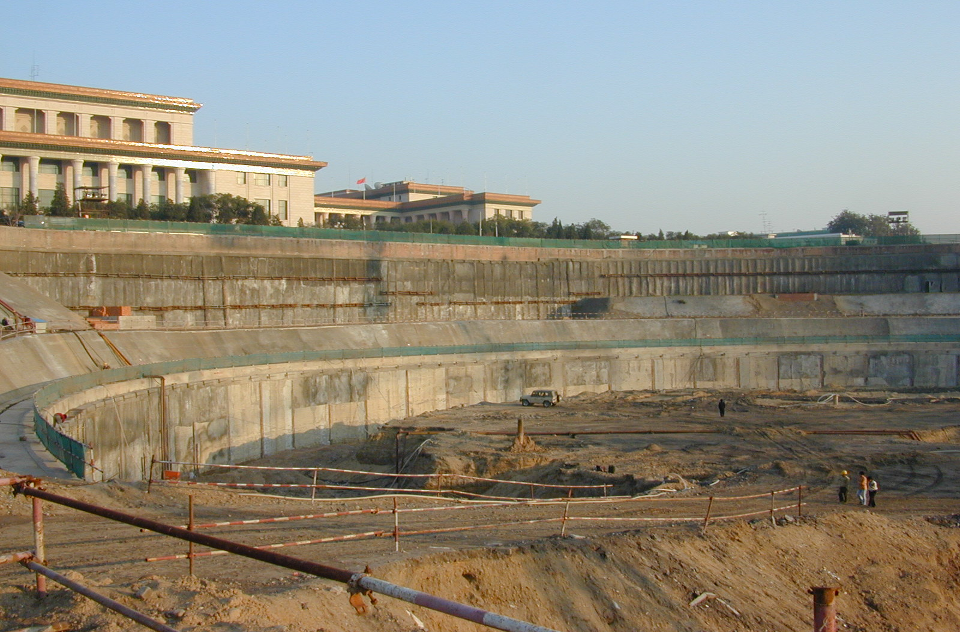
- The Application of Self Drilling Anchor Bolt in Beijing Oriental Plaza Foundation Support Project
- Time:2015-08-20From:This Site
- In the realm of modern construction and engineering, the utilization of cutting-edge technologies and innovative methodologies is paramount to overcoming the challenges posed by complex geological conditions and formidable project scopes. A prime testament to this is the remarkable application of a self-drilling anchor system in the monumental Beijing Oriental Plaza Foundation Support Project.
- View details
-
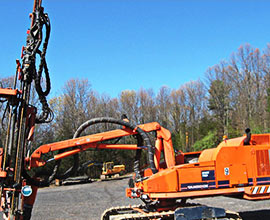
- Enhancing Slope Stabilization at the Left Bank of Xiluodu Hydropower Station with Self-Drilling Anchor Bolts
- Time:2024-10-18From:This Site
- Slope stabilization in challenging geological conditions has always been a daunting task for engineers and construction experts. In the case of the Left Bank of Xiluodu Hydropower Station, where complex geological stratifications and a short construction period posed significant challenges, the innovative application of self-drilling anchor bolts emerged as a game-changer.
- View details
-
.jpg)
- Xingyi Normal University for Nationalities Retaining Wall Reinforcement
- Time:2023-09-21From:This Site
- The Xingyi Normal University for Nationalities Retaining Wall Reinforcement project stands as a testament to the capabilities and effectiveness of Sinorock's self-drilling anchor system in addressing even the most challenging slope stabilization tasks.
- View details
-
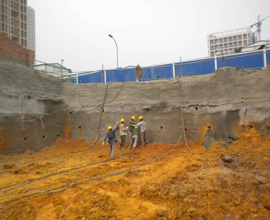
- The Slope Support Project of Dong Miao Residential Area in Ji Nan
- Time:2015-10-30From:This Site
- In the ever-growing urban landscape, the challenge of stabilizing slopes and ensuring the safety of residents is of paramount importance. The success story of the Slope Support Project in the Dong Miao Residential Area, situated in the heart of Ji Nan, serves as a beacon of innovation and engineering excellence. The application of the cutting-edge Self-Drilling Anchor Bolt System has not only ensured the stability of the slopes but has also set a new standard in slope stabilization.
- View details
 Download
Download 


